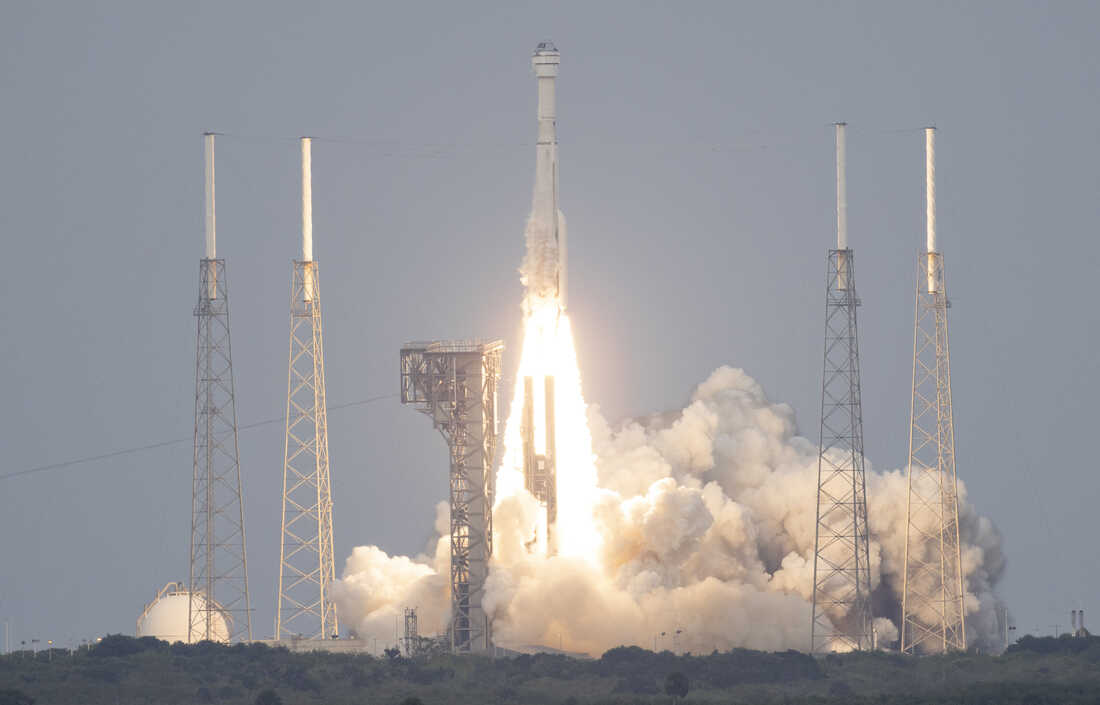

After encountering technical issues since its launch on June 5, Boeing's Starliner spacecraft is facing further delays in returning astronauts Barry Wilmore and Sunita Williams from the International Space Station (ISS). NASA has postponed the return date for the third time without a confirmed date, with the current target of July 6 extending the original eight-day mission plan significantly. This setback comes after multiple delays in the project's production and testing phases, with NASA expanding the crew size and mission duration to up to six months aboard the ISS. Safety concerns were also highlighted in a NASA safety review which revealed compromised planning processes in the project.
Boeing Starliner Mission Encounters Further Delays, Extending Astronauts' Stay on ISS
Background:
The Boeing Starliner is a reusable spacecraft developed by Boeing for NASA's Commercial Crew Program. It is designed to transport astronauts and cargo to the International Space Station (ISS). The first test flight, called OFT-2, launched on June 5, 2023, but encountered technical issues after reaching orbit.
Current Situation:
After multiple delays, the OFT-2 mission is now facing further setbacks. NASA has postponed the return date for astronauts Barry Wilmore and Sunita Williams for the third time. The current target date is July 6, extending the original eight-day mission plan significantly.
This latest delay is due to issues with the spacecraft's propulsion system. Boeing is working to replace faulty valves and conduct additional testing. NASA has also expanded the crew size and mission duration to up to six months aboard the ISS to accommodate the delays.
Impact:
The delays have raised concerns about the safety and reliability of the Starliner spacecraft. A NASA safety review revealed compromised planning processes in the project, highlighting the need for further testing and evaluation.
Top 5 FAQs and Answers:
1. Why have there been so many delays with the Starliner mission? A: The Starliner has encountered technical issues throughout the production, testing, and launch phases, including problems with its propulsion system and software.
2. When will the Starliner return to Earth? A: The current target return date is July 6, but this could be subject to further delays.
3. What are the implications of the extended mission duration for the astronauts? A: The extended stay on the ISS will require additional supplies, including food, water, and other necessities. It could also affect the astronauts' physical and mental well-being.
4. What are the long-term impacts of the delays on NASA's Commercial Crew Program? A: The delays with the Starliner mission could affect the timeline and costs of future crewed missions to the ISS and potentially delay NASA's plans to explore deep space.
5. What is NASA doing to ensure the safety of the astronauts? A: NASA is conducting a comprehensive safety review of the Starliner project and working closely with Boeing to resolve all technical issues. The return date will only be confirmed once the spacecraft and its systems are deemed safe.

On October 24, the global community commemorates World Polio Day to honor the legacy of Dr. Jonas Salk and the efforts of countless individuals and organizations in the fight against polio. This highly contagious and potentially deadly disease, once a widespread epidemic, is now largely preventable thanks to the development of a life-saving vaccine. India's successful eradication of polio serves as a testament to the importance of strong vaccination programs and collaborations in public health initiatives.

As winter arrives in India, so does the hazardous air pollution. Delhi NCR's AQI has already crossed the 400 mark, making it crucial to invest in air purifiers, especially after Diwali. Dyson, Qubo, HomePure, and Philips have launched high-quality air purifiers with advanced features to tackle different types of pollutants and create cleaner indoor air. With prices ranging from Rs 5,000 to Rs 1 lakh, these purifiers are a practical and timely purchase for a healthier living.

In a recent family vlog, Indian celebrity couple Shoaib Ibrahim and Dipika Kakar shared their "natural" hair care routine for their son, using a homemade mask made with rice flour, flax seeds, and coconut oil. However, experts warn that what works for adults may not be suitable for babies, whose sensitive skin and scalp could react to the ingredients. While the ingredients may improve hair texture, they do not necessarily promote hair growth. Instead, a healthy diet and good scalp care are more important in maintaining healthy hair.

A recent consumer study has found multiple brands of soft contact lenses in the U.S. to contain "forever chemicals" that can be harmful to both the body and the environment. The study, conducted by the nonprofit organization Environmental Health Sciences, tested 18 varieties of popular contact lenses and found all of them to contain markers for PFAS. Brands such as Acuvue, Alcon, and CooperVision were among the list of affected products. This news serves as a cautionary lesson on the potential risks of overusing contact lenses.

On the birth anniversary of Dr. APJ Abdul Kalam, the ‘Missile Man’ of India, tributes pour in on social media celebrating his life, vision and impact. A visionary scientist, inspiring leader and true patriot, Dr. Kalam's humility, compassion and constant interaction with students continue to inspire generations. His tireless efforts in defense, science and youth empowerment have strengthened India's path towards self-reliance and his legacy continues to motivate young minds to dream big and work hard for the nation.

Recent studies have found that extreme heat, particularly when combined with high humidity, can have a significant impact on mental health. A study in India showed that when wet bulb temperature exceeded 27°C, the probability of reporting severe depression increased by 0.5%, even when the temperature was slightly lower. This finding is consistent with global reviews that have linked high temperatures to mood disorders, increased hospital admissions for psychiatric conditions, and even elevated suicide risk. The Lancet has also published evidence that rising temperatures worldwide are a growing threat to emotional and cognitive health.

In a meeting with university officials in Udaipur, Rajasthan Governor Hari Bhau Bagde stressed the importance of incorporating India's ancient knowledge traditions into academic research. He highlighted the deep repository of knowledge in India since ancient times and urged scholars and scientists to draw upon this tradition in their work. Bagde also suggested making ancient texts available in university libraries for study and research purposes, in order to shape the intellectual abilities and love for the nation among the younger generation.

John Clarke, Michel H. Devoret, and John M. Martinis have been awarded the 2025 Nobel Prize in Physics for their pioneering research into quantum mechanical tunnelling. Their discovery has opened new possibilities for quantum technologies, and will be formally presented on December 10, the anniversary of Alfred Nobel's death. This announcement follows the tradition of recognizing transformative contributions to science, and the award carries a prestigious prize of 11 million Swedish kronor.

The US-Japanese trio of Mary E Brunkow, Fred Ramsdell, and Shimon Sakaguchi have won the 2025 Nobel Prize in physiology or medicine “for their discoveries concerning peripheral immune tolerance". Through their research, they have shown how the immune system is kept in check and why serious autoimmune diseases do not affect everyone. Sakaguchi found a new class of T cells, while Brunkow and Ramsdell discovered the explanation behind a specific mouse strain's vulnerability to autoimmune diseases. Together, they have significantly advanced our understanding of immunology and autoimmune diseases.

Indian astronaut Shubhanshu Shukla, who recently completed a 20-day space mission, shared his insights and experiences at the convocation ceremony of Dr. APJ Abdul Kalam Technical University. He highlighted the importance of patience, focus, and the inevitability of change in achieving success, and urged the graduating class to actively contribute to shaping a fearless and ambitious India.